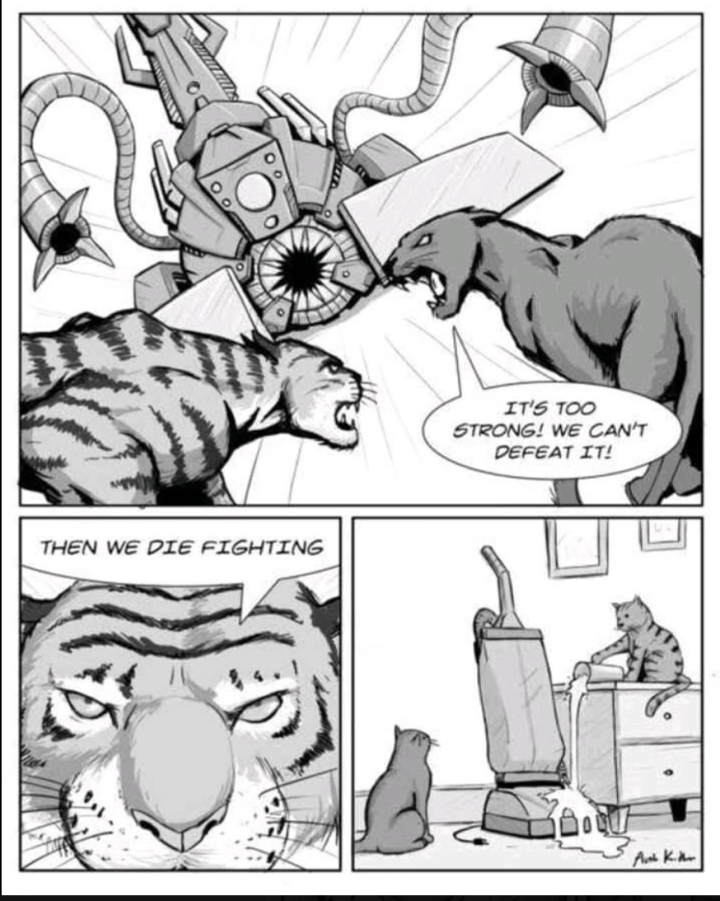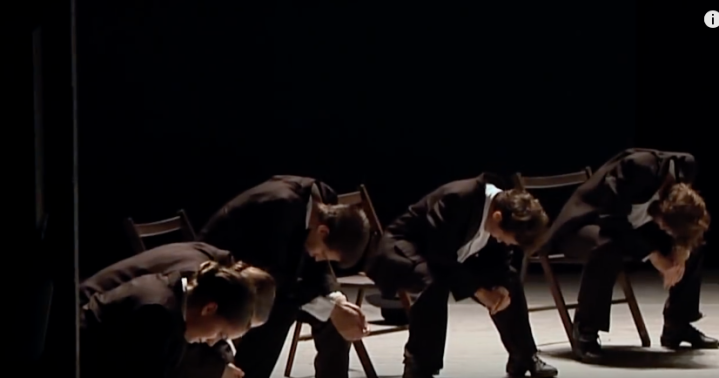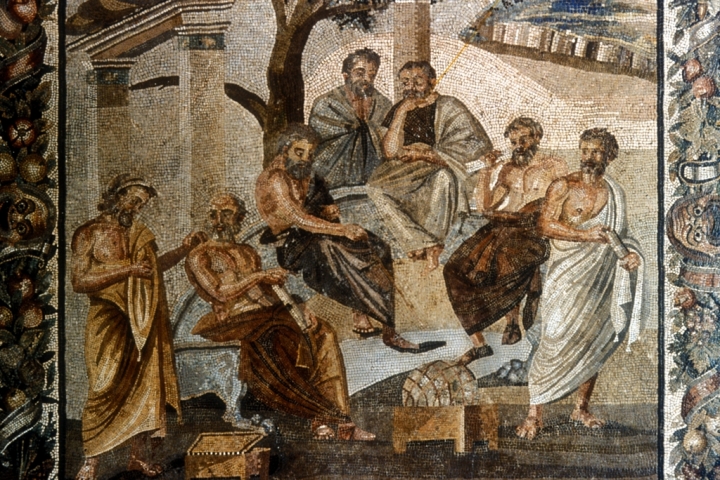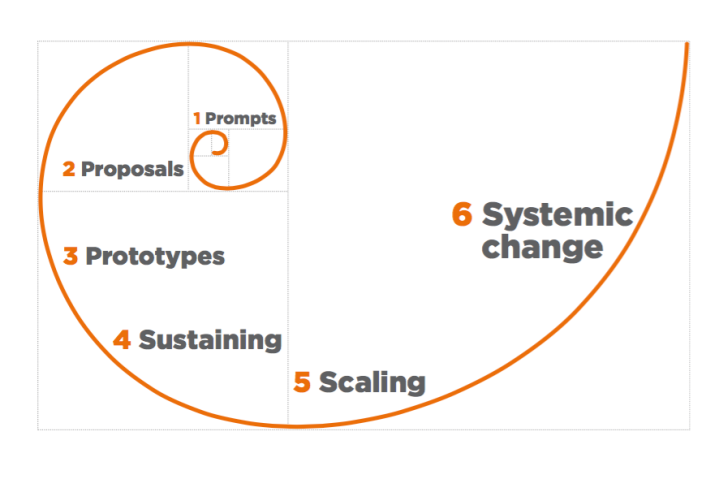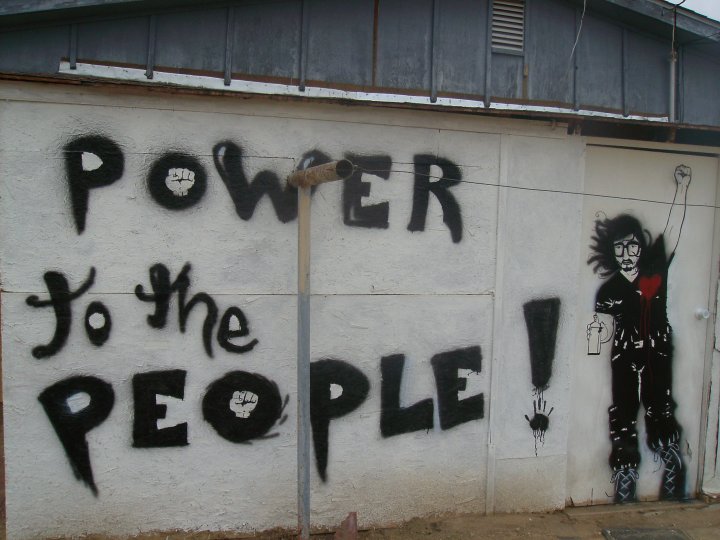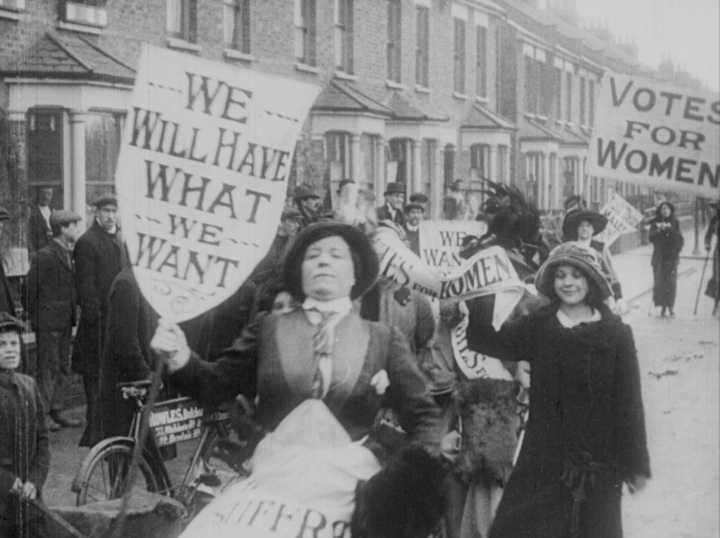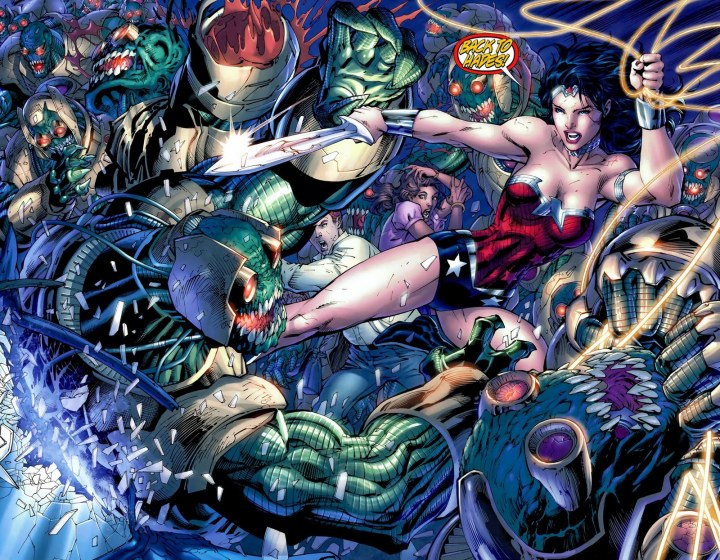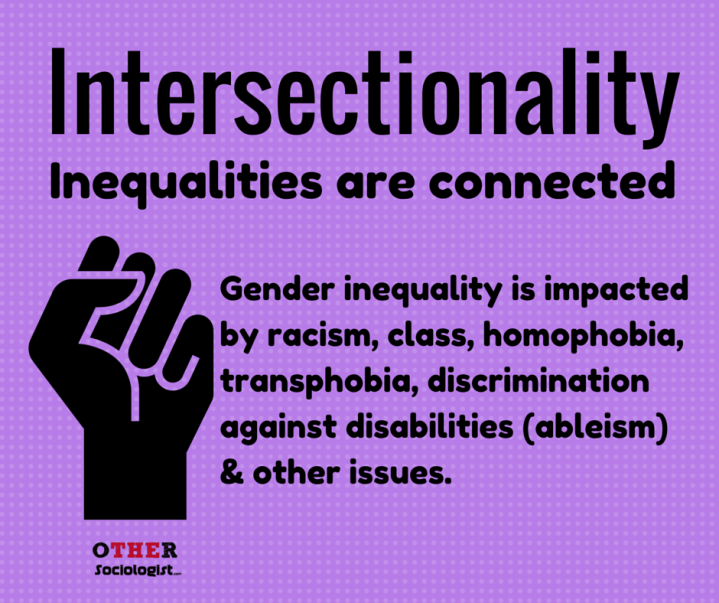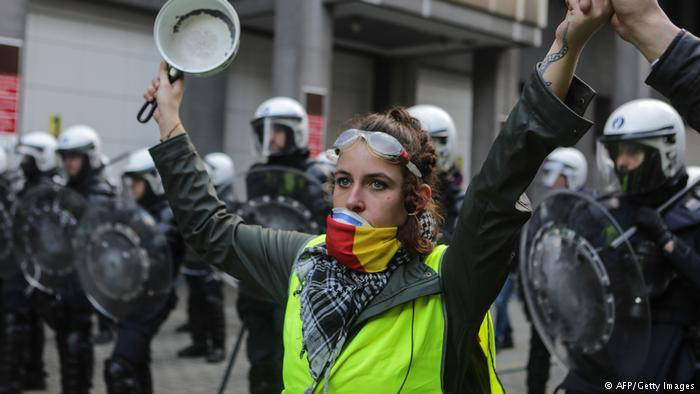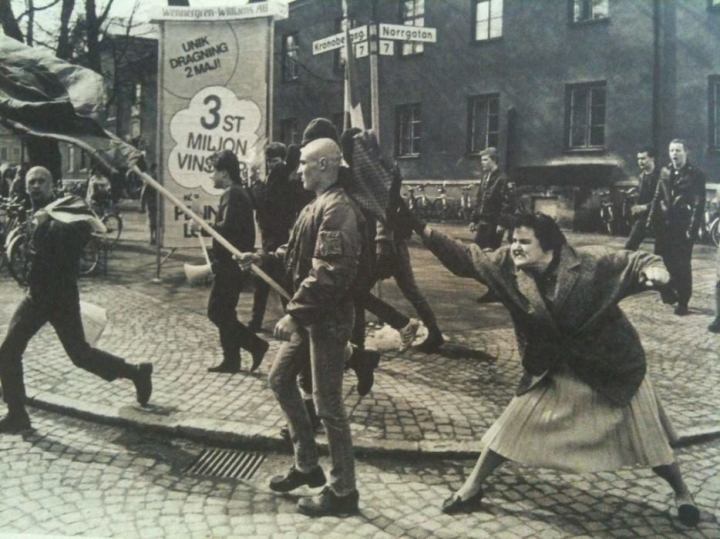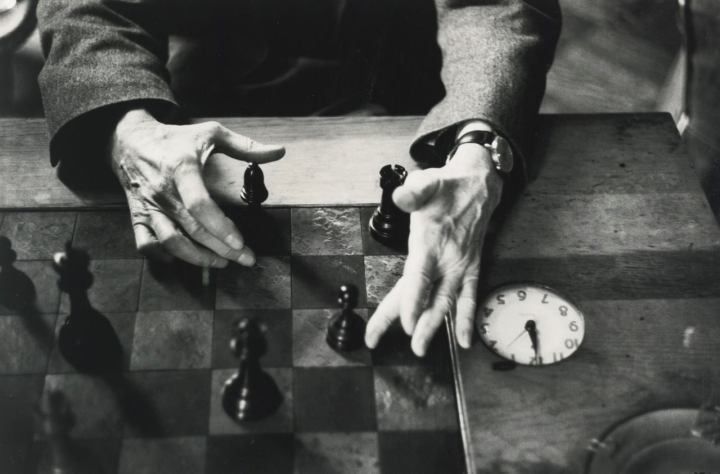ХОР
Не знам добре ли стори ти, но по-добре
да бе умрял, отколкото да бродиш сляп.
ЕДИП
Не казвай, че не съм постъпил най-добре
така, недей, не ме съветвай повече!
Не знам с какви очи бих гледал татко си,
когато ида в ада, между сенките,
и майка си, злочестата: вината ми
пред тях не ще изкупи и бесилката.
Ала копнял ли бих да срещна погледа
на своите деца — родени, както са
родени?
— Едип цар
Едиповият комплекс е една от най-ползваните обяснителни рамки в психоанализата (да, най-нагло ще продължа да ползвам Уикипедия, както съм се зарекла отдавна, понеже за неполитически неща, постиженията са невероятни; а за eдиповия комплекс, ретроградните елементи още не са се усетили колко е политически). Историята на Едип, която се оказва, че разиграваме периодически от бебешка възраст та поне до юношеството ни, когато отново се активира, индивидуално и колективно, на символно и фантазно ниво, е известна: Едип е обречен да убие баща си и да се ожени за майка си и, по ред стечения на обстоятелствата и не само, това се случва.
Всеки един от нас, неизбежно, минава през тази несъзнавана фантазия. Успешното й отработване, през личния капацитет и през капацитета на родителите, а ако не – по-късно евентуално чрез психотерапия и други по-неуспешни похвати на обществото, води до развитието на много полезни качества, умения, режими на мислене, отношения, разбиране, творчество и пр.
Една от най-тежките травми, която можем да преживеем е, когато несъзнаваните ни фантазии се сбъднат – било, когато са най-активни, било когато, през сбъдването си, активират фантазната ситуация отново. Понеже индивидуалната анализа не ми влиза в работата, ще се опитам да генерализирам относно случващото се на ниво колективно несъзнавано, или по-скоро, когато цели групи от хора и поколения преживяват едиповата ситуация като реална.
Представям си, че с този блог пост ще се опитам да проследя какво се случва, когато колективно преживеем такава травма и се окаже, че Едиповата ситуация е символно разиграна в реалността. Ще маркирам четири нива: манийният триумф на “Eдип” и съпътстващите, често потиснати драми; лишаването от символен и властови капацитет на “бащата”, който е оцелял само физически; “затварянето на очите” от страна на обществото, допринасяйки за сбъдването на пророчеството; и какво се случва с децата на Едип.
Едип през 1990-те години

Нямам много доказателства, отвъд личния си опит от онези времена, но ако някой има желание може да си ги намери – сигурна съм, че има някъде данни кои бяха хората на улицата. Истинските, безкористни носители на демократичния импулс в ранните 1990-те, бяха юношите – 13-20 и няколко годишните. Това бяха хората, които излязоха на улиците, които правиха барикади, които внасяха музика, филми, концепции от “демократичния” Запад. Млади хора, движени от бунта и на възрастта си – събудената и разиграна отново едипова драма, бунтът срещу родителите си, бунтът срещу управляващите, бунтът срещу авторитетите. Бунт, който всяко поколение преживява. Но бунтът, в който това поколение победихме.
Победихме като детронирахме предишното поколение, под предлог, че детронираме един режим, който сам си отиваше и си отиде. Детронирахме с реално лишаване от власт, но и с обезценяване, подигравка и често дива омраза – канализирали бунта и отричането на авторитета на собствените ни родители.
Не говоря за хората от трибуните, които се възползваха от едиповата ситуация на младите и им помогнаха да победят в умовете си в бунта им – с интерпретации и реални интервенции, които валидизираха желанието да се убие или поне кастрира предишното поколение. Отречена и осмяна беше цялата предходна система, с все достиженията й. Отречена и осмяна беше цялата концептуална и обяснителна рамка. Отречени и осмяни бяха начините на правене на образование, наука, производство, медицина, политика. Отречени и осмяни бяха капацитета и уменията на поколението на “тоталитаризма” (вж Статева, 2019 тук, от стр. 276).
Макар и да не бяха реално убити, хората с ресурс и житейски и друг опит бяха реално и символно кастрирани и изключени от обществения и производствения живот. С изключение на тези, които чрез сенилността или меркантилността си (заменена с “демокрация”, “пазарна икономика”, “шокова терапия”, “меритокрация” и пр.) се вписваха в новите времена. Едип харесва това.
Едип харесва това, но и го боли за загубените авторитети. За да се справи със загубата триумфира манийно вече 30 години и търси безкритично загубените авторитети в нови, по-добри, по-“западни”, които да му помогнат да си мисли, че истинският му “баща” не е детронираният и обезглавеният. Не е този, който му е дал читаво образование, отношения и условия за оцеляване по достоен начин, а този, който го е осиновил и “отгледал” – имагинерният “Запад”. И, разбира се, не спира да повтаря и показва, че погубените през 1990-те авторитети, не са истинските му “бащи” – истинските му бащи са авторите на каптализЪма, начело с Адам Смит, ако и да не е го е чел, както и, разбира се, авторите на шоковата терапия, ако и да не ги знае кои са.
Щайнър, с който ще се огранича сред авторите по темата в този пост, обръща внимание на по-ранните травми на Едип и, в частност, тези маскирани от илюзията за щастливо детство при осиновителите му. Любопитно е как хора, които повече от очевидно са получили поне отлично здравеопазване и образование при авторитетите, които отхвърлят, с готовност се впускат в “шоково-доктринните” и “неолиберални” парадигми на тези, които приемат за свои осиновители. Тежката травма на Едип, породена от подмяната на собствения му произход със желания произход, показва Щайнер, ‘може да блокира приемането на вина, и следователно да блокира един доброжелателен цикъл на прошка и репарация”.
Едип през 1990-те години не се вихри само в България. Синовете, без значение на пола им, се бунтуват срещу родителите си през 1990-те навсякъде в Европата и “демократичния свят”. Срещу бащите, родили “бейби буумърите”, бащите, които са се борили и живяли за “Никога отново” на Холокоста и Втората световна война. Бащите (и майките), които са посветили всяка своя стъпка на един по-добър свят, и които го бяха осигурили за няколко десетилетия.
Рейгън, Горабчов, Тачър и сие яхнаха бунта на тогава тийнейджърите, които сега са световни лидери, било в професионалната си сфера, било в практиката, било в разработването на политики, било в голямата политика. Тези бунтовници плачат от умиление от падането на Берлинската стена, и подхождат с най-малкото пренебрежение към издигането на стената на “шоковата терапия”, която в наши дни води до иллеберализма на новите автокрации в Източна Европа и на расизма срещу “новите джиписита” от тези земи.
Родителите на Едип
 В България – 45 години опит, а може би и повече, биват отрязани с лошите и добрите им страни. На Запад – до 2008 година това знание и опит и смесването им с опита от соц. – страните води до ценна и полезна критика. Само през последните три години, наблюдаваме наплив и дори нахлуване на сенилност, т.е. войнстване на кастрирани и в резултат дементни политици, в разработването на политики. В България: от Урумов до Мутафчийски, от решението за обявяване на противоконституционно на понятието “джендър” (все едно да се обяви за неконституционна Питагоровата теорема или принципите на термодинамиката) до Концепцията за интеграция на ромите на Каракачанов, която дословно повтаря “Върху циганския въпрос” на Химлер и Мюлер.
В България – 45 години опит, а може би и повече, биват отрязани с лошите и добрите им страни. На Запад – до 2008 година това знание и опит и смесването им с опита от соц. – страните води до ценна и полезна критика. Само през последните три години, наблюдаваме наплив и дори нахлуване на сенилност, т.е. войнстване на кастрирани и в резултат дементни политици, в разработването на политики. В България: от Урумов до Мутафчийски, от решението за обявяване на противоконституционно на понятието “джендър” (все едно да се обяви за неконституционна Питагоровата теорема или принципите на термодинамиката) до Концепцията за интеграция на ромите на Каракачанов, която дословно повтаря “Върху циганския въпрос” на Химлер и Мюлер.
Хората от онова поколение, които остават във властта, имат капацитет на нарязани краставици. Това, разбира се, не е проблем само на България, макар че става видно едва в последните години, когато сенилността и неадекватността на политиците започва да се проявява с външния им вид – от Тръмп до Джонсън. Това, което Тим Дартингтън дефинира като “брилянтна глупост” започва да надхвърля индивидуалните организационни капацитети и се прехвърля в локалните и глобални политики.
Малко е известно реално, коя и каква е майката на Едип, както и как се чувства на различните етапи. По всичко личи, че типично за патриархалните култури, тя е някак пасивна по отношение на съдбата и преживяванията си. Коя е тя? Тъгува ли по загубеното си дете? Влюбва ли се в убиеца на мъжа си или просто приема, че е редно да приеме победителя? Как се чувства от това, че бащата на децата й е убиецът на мъжа й и, всъщност, синът й?
Нямаме много информация и няма как да обозначим коя е тя в колективното несъзнавано. Може би държавата, която като майка на обществото ни, или поне това се очаква от социалната държава, подава ръка на “революцията”, на неолиберализма, за да запази принципите и идеалите на доброто семейство, доброто общество, добрата демокрация, добрата република?
Ако социалната държава е майката на Едип, какво се случва с типoвете социална държава, документирани от Еспинг-Андерсън? Социалната държава, възходящо с последните десетилетия е суспенидрана и всячески обругавана, докато служителите в нея или се корумпират безнадеждно, платили с морала си за сегашната политическа ситуация, или кършат отчаяно ръце в опит да пордължат да спасяват хората. Не знам какво повече да кажа в тази област, понеже то цялата работа, много едипово и инак някак неудобно идва. Не за друго, а от цялата работа хора не просто се разболяват и страдат, а умират. Някои, от 2013 г. поне насам, и се самозапалват – засега в България.
Затваряйки си очите
 Че властниците отдавна знаят накъде отиват нещата е повече от ясно. Реалността на бомбоубежищата и други убежища за уърст кейс сценарио са известни и доста забавни, както и тези в сценариите на множество холивудски филми.
Че властниците отдавна знаят накъде отиват нещата е повече от ясно. Реалността на бомбоубежищата и други убежища за уърст кейс сценарио са известни и доста забавни, както и тези в сценариите на множество холивудски филми.
Същият Щайнър, който извзех за този блог пост, говори за феноменът на покриването на едиповата ситуация. Той забелязва, че често имаме достъп до адекватно знание, но тъй като то е неприятно и разстройващо обичайните ни режими на функциониране, ние – несъзнавано или понякога съзнавано – избираме да го игнорираме.
Според Щайнър, цялото общество е знаело за проклятието на Едип и го е способствало като си е мълчало, предотвратявайки информираният избор на Едип и близките му. За него, истински отговорни са не Едип и семейството му, а едно общество, което е направило проклятието и сбъдването му възможно с пасивното и активното си съучастие. По подобен начин, цяло едно общество знае какви ги върши нашенският Едип и гласува с негласуване на разиграната от него/тях ситуация. Вихрейки се по мас- и социални медии, докато убива баща си, нашият си Едип не впечатлява никого и дори не успява да докара народа до изборните урни, камо ли до читателска аудитория. Триумфирайки вече 30 години, “демократичният” Едип се опитва да не признае, че кастрирайки “елита” на “соца”, кастрира, т.е. ослепява, собствения си свят и собственото си поколение.
А народът, масите или както и да ги наречем, знаят. Знаят, че Харалан Александров чете несъзнаваното на народа и масите по книгите на все по-стесняващият се иллиберален елит и не по книгите на тяхното колективно несъзнавано. Знае и се присъединява към “ГЕРБ”, “Обединените патриоти”, “Възраждане”, “Шипка”, “Крепостта Европа” и други неонацистки формирования, понеже му липсват колективни интерпретации, които да му помогнат да разбере и да противодействат на едиповата ситуация, в която е изпаднал. Хората знаят, че Харалан или Маргиналия нещо не им казват, както и БСП, и преди това СДС, и сега – Правителството на ГЕРБ и, за да сме съвсем съвременни, на Кризисния щаб НОЩ.
Народът, масите, знаят, че нещо не е както трябва, че разиграват сценарий, който друг е написал, че участват в самонаписано и самоизъпълняващо се пророчество, в което те играят тези с картофките и бирите на дивана пред телевизора или фейсбук страниците. И, както Щайнер описва, пък и както се е случило в древногръцкия мит, нищо не могат да направят, освен, в най-добрия случай, да го играят ХОРЪТ.
Децата на Едип
 Децата на Едип, четете си я сами тази работа по мита, са звезди. Ако има нещо положително в драмата на “прехода”, че Едиповата драма роди най-малкото Антигона – Антигона, от всички полове, която не се ръководи от голямата политика, а от политиката на общността, справедливостта, солидарността и съпричастността. Антигона, която живее и се бори, не само за братята си, паднали в неолибералната борба и озовали се на улицата, или станали с докторати таксиметрови шофьори или работещи достойно 24/7, само и единствено, за да оцеляват.
Децата на Едип, четете си я сами тази работа по мита, са звезди. Ако има нещо положително в драмата на “прехода”, че Едиповата драма роди най-малкото Антигона – Антигона, от всички полове, която не се ръководи от голямата политика, а от политиката на общността, справедливостта, солидарността и съпричастността. Антигона, която живее и се бори, не само за братята си, паднали в неолибералната борба и озовали се на улицата, или станали с докторати таксиметрови шофьори или работещи достойно 24/7, само и единствено, за да оцеляват.
Децата на Едип погребват братята и сестрите си, отхвърлени от системата, против разпореждането на властта. Помагат и са солидарни с бездомните, затворниците, жертвите на експлоатация, потисничество и съвременното робство – като Българско затворническо сдружение, Автономен Работнически Синдикат, Фабрика Автономия, Жълти жилетки България, Храна – не война, Черната и Червената Антифа. Изпълняват ритуалите на скърбенето като се събират и празнуват борбата и оцеляването или жертвите или анализират като Студентско общество към СУ, Живот след капитализма, Адопто, Диверсия и други. Да се борят срещу расизма и новонадигащия се фашизъм като Б’ней Б’рит, Асоциация на оцелелите от Холокоста в България, Постоянна ромска конференция и др.
Да се чувстваме ли щастливи и горди и да продължаваме ли да живеем като Едип или като обществото, което е позволило едиповата ситуация? Нямам много отговори. Антигона престъпва закона на властниците и погребва брат си, противно на закона. Антигона, по свой начин, осъществява революция в името на справедливостта на кръвта – солидарността, братството, лоялността, емпатията, правото на живота. Другите деца на Едип и майка му, Полинес, Етеокъл и Исмена, не оставят много впечатляващи, камо ли пък поучителни истории. От нас зависи коя част от едиповата драма ще разиграем и с какви последствия.



